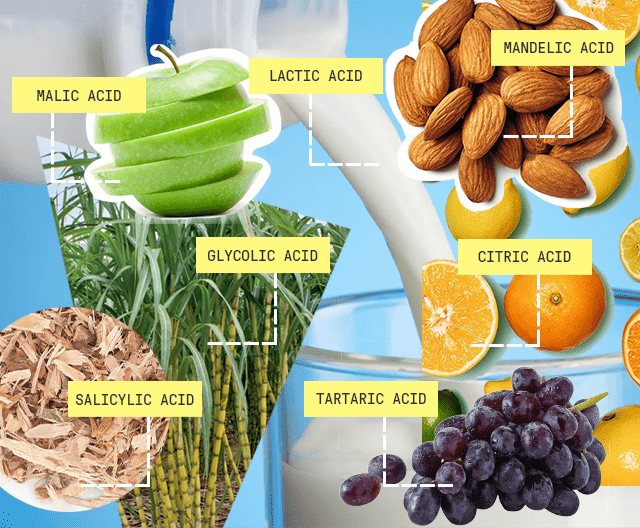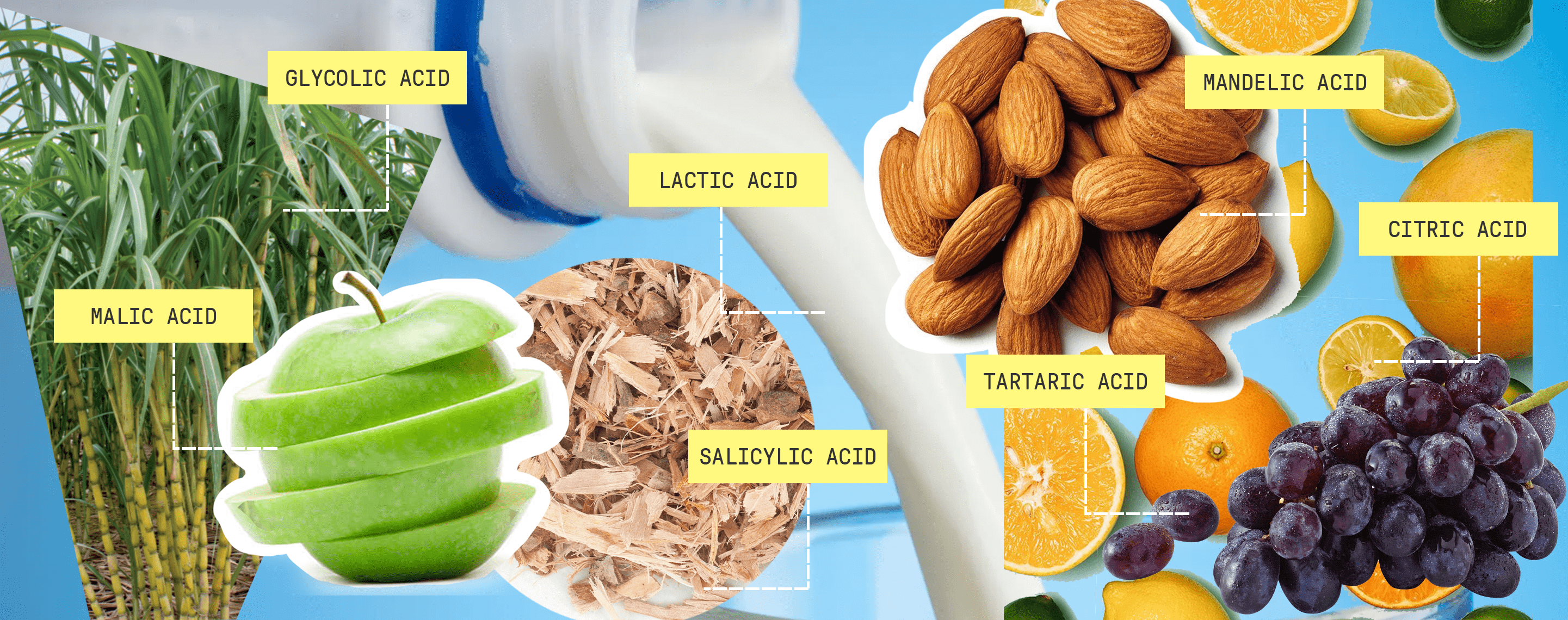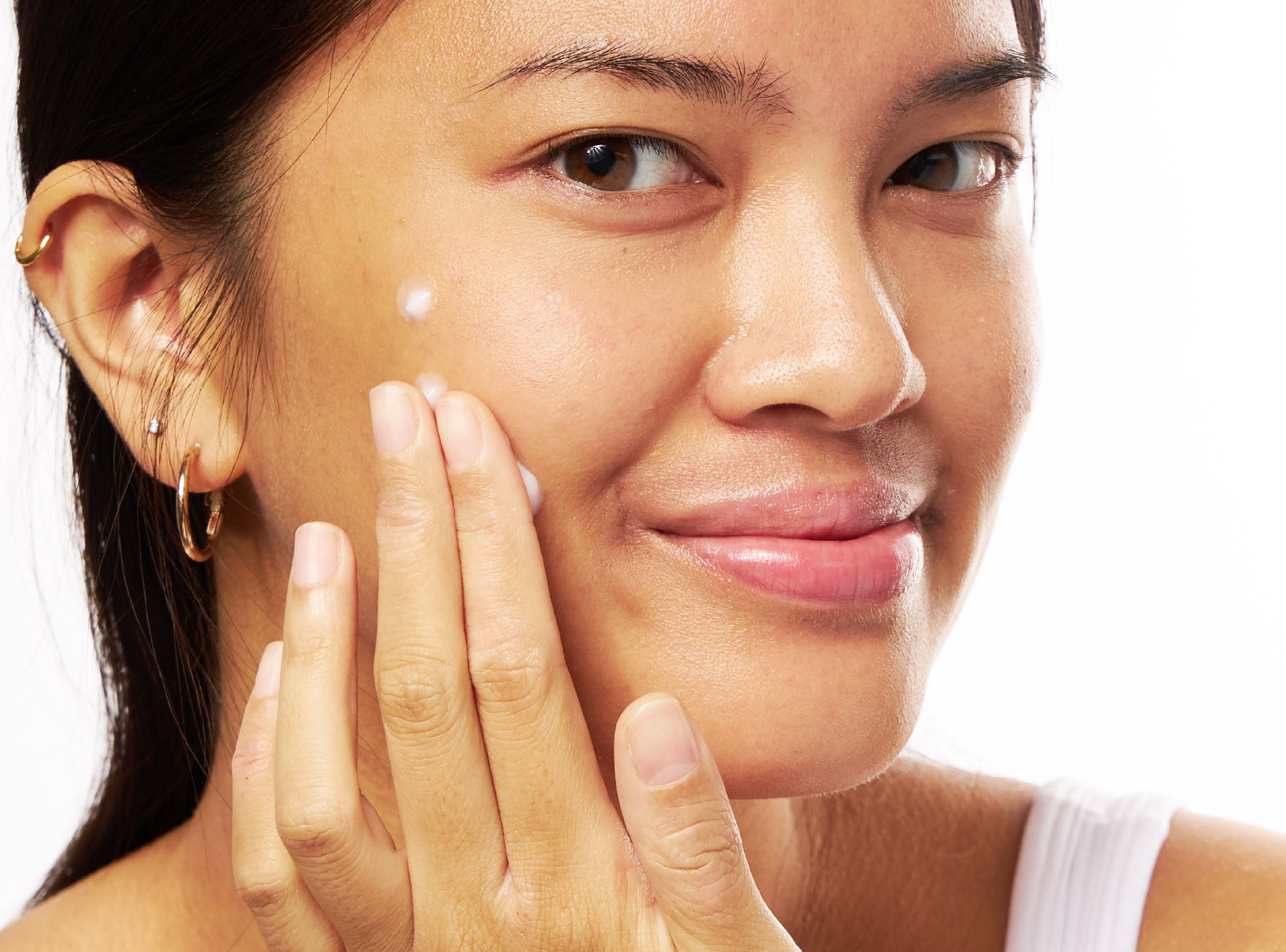Education
Everything You Need to Know About Exfoliating Acids


SHARE
Education
Everything You Need to Know About Exfoliating Acids
Medically reviewed by Aimee Paik, MD
Written by Annie Lam
Last updated 4/5/2022
If you’re looking for a skincare ingredient that will help target uneven skin texture, clogged pores, fine lines, and more - exfoliating acids might be the answer! You may have seen terms like AHA, BHA, and PHA floating around in the skincare space, but aren’t sure what they mean. We know skincare can be confusing, so today we’re breaking down everything you need to know about exfoliating acids.
What are Exfoliating Acids?
Some exfoliating acids help to remove dead skin cells by dissolving the bonds or “glue” between your skin cells, while others go deeper into your pores to clear out excess oil and sebum. Doing this allows the top layer of dead skin to shed, revealing brighter, healthy skin. Chemical exfoliants refer to exfoliating acids like AHAs, BHAs, and PHAs, and physical exfoliants refer to mechanical forms of exfoliation like face scrubs, cleansing devices, and washcloths. They both have their place, but dermatologists overwhelmingly prefer chemical over physical exfoliators because physical forms of exfoliation can be harsh and abrasive on the skin when used improperly. Additionally, physical exfoliators only work on the surface of the skin, but some chemical exfoliators can work deeper to help treat clogged pores and mild breakouts.
The Different Categories of Exfoliating Acids
Alpha-Hydroxy Acids (AHAs): Water-soluble exfoliating acids that remove dead skin cells at the surface of the skin and increase your skin's cell renewal rate. AHAs can help firm the skin, treat uneven skin texture, and fade hyperpigmentation.
Glycolic Acid (AHA): Glycolic acid is one of the most popular acids on the market. It’s derived from sugar cane, and is the smallest molecule of the AHAs. Due to its low molecular weight, it penetrates your skin easily and is very effective for treating hyperpigmentation, uneven skin texture, and signs of aging. However, it may not be the best for sensitive skin due to its strength.
Lactic Acid (AHA): Lactic acid was originally derived from sour milk (it’s been said that Cleopatra’s secret to glowing skin was bathing in milk), but there are synthetic, vegan alternatives on the market now. It has a larger molecule size than glycolic acid, so it helps to brighten, firm, and smooth the skin with less irritation. Lactic acid also helps to improve the skin’s natural moisturizing factors (hydrating ingredients that your skin naturally produces), so it’s a great option for dry skin.
Mandelic Acid (AHA): Mandelic acid is derived from bitter almonds, and has the largest molecule size of the AHAs, making it one of the most gentle options. It helps with your skin’s cell turnover process, brightens the skin, and targets clogged pores. If you have sensitive skin, mandelic acid may be the best AHA for you!
Tartaric Acid (AHA): Tartaric acid is a less-popular AHA that is derived from plants like grapes and bananas. It is also an antioxidant, so it can help protect your skin from environmental damage (like pollution). Tartaric acid is also one of the gentler AHAs, so it’s often used in exfoliating products alongside other acids to increase the efficacy of the product with less chance of sensitivity or irritation.
Malic Acid (AHA): Malic acid is another gentler AHA that is derived from apples. It has a larger molecule size than lactic and glycolic acids, so it is more suitable for sensitive skin. Like tartaric acid, it’s also often combined with other acids to create exfoliating products that treat a variety of different skin concerns. It also acts as a humectant, so it helps to draw moisture into the skin.
Citric Acid (AHA): First off - steer clear of DIY skincare trends like lemon juice masks. While citric acid is derived from citrus fruits, it’s been stabilized and formulated to be used in skincare without damaging your skin. Citric acid can help gently exfoliate the skin and provide antioxidant protection, but it’s more commonly used in skincare to help adjust the pH of skincare formulas.
Beta-Hydroxy Acids (BHAs): Oil-soluble exfoliating acid that penetrates deeper into your pores to help remove excess oil and sebum from the skin. A great option for people with oily skin or open comedones (blackheads).
Salicylic Acid (BHA): Salicylic acid is the most commonly used BHA and is an over-the-counter monograph ingredient that is regulated by the FDA (between 0.5 - 2%) to treat acne. It’s an oil-soluble exfoliating acid, so it’s able to penetrate deeper than AHAs (which are water-soluble) and is an ideal option for oily skin. It’s a great treatment for mild acne, blackheads, and whiteheads. It’s also naturally anti-inflammatory, so it can help treat inflamed pimples and unclogging pores.
Poly-Hydroxy Acids (PHAs): One of the most gentle exfoliating acids. PHAs can provide similar results to AHAs with less irritation responses due to their larger molecule size. A great option for sensitive skin types that cannot tolerate stronger exfoliating acids.
Gluconolactone (PHA): Gluconolactone is the most popular PHA. It helps to even out skin tone and texture, acts as a humectant to draw moisture to the skin, and has antioxidant properties to help protect your skin from free radicals. While PHAs are typically not as effective as AHAs or BHAs, they are a great option for sensitive skin that can’t tolerate stronger acids.
Lactobionic Acid (PHA): Lactobionic acid is another PHA that is derived from milk. Its larger molecule size provides gentle exfoliation on the surface of the skin, and it also acts as a humectant to hydrate and plump the skin. Like gluconolactone, lactobionic acid also has antioxidant properties to protect the skin, and is also a great option for sensitive skin.
![]()
How to Add Exfoliating Acids to Your Routine
First of all, do you need them? Like most things in skincare, they’re not a necessity! Exfoliating acids are a “nice to have” if you want to try them, but keeping a simple routine is really all you need.
Start slowly. We recommend starting slowly when incorporating exfoliating acids to your routine. Starting out 1-2 times a week is a great place to start, and you can increase frequency slowly if your skin is tolerating them well.
Be cautious with retinoids. If you are just starting out with retinoids like tretinoin, we recommend pausing on adding new products (like acids) to your routine. Additionally, if you are already using a retinoid, you likely don’t need exfoliating acids as they both treat similar concerns. If you decide to incorporate acids, use them on an alternating basis with your retinoid.
Stay diligent with SPF. Exfoliating acids can increase your skin’s sensitivity to the sun, so it’s important to take proper sun protection measures when using acids in your routine. We recommend using at least SPF 30 every day, and wearing a wide-brimmed hat while outdoors. If you're looking for the perfect derm-approved, sensitive face sunscreen, shop 'Screen!
Overall, there are lots of exfoliating acids out there on the market, so it’s all about finding the right products for you and your skin. If you have questions about incorporating exfoliating acids to your routine, feel free to reach out to a dermatologist or healthcare provider! They’ll be able to advise you on the best way to add new products based on your treatment plan.
Shop this post

'Screen
Like what you just read? Sign up for our email list to get the scoop on skincare science delivered straight to your inbox.

General
What is milia?
What is milia? Today, we’re jumping into one type of bump that you may have heard about most commonly in infants — milia.
Read More
General
Best moisturizer for acne-prone skin
If you have combination acne-prone skin, figuring out which moisturizer is best for your skin might be tough. In this guide, we break down the best moisturizer for combination, acne-prone skin.
Read More
General
How to build a face care routine
As you get into skincare, it might seem overwhelming, especially trying to figure out the order you're supposed to apply products in. Below, we detail how to build a face care routine for your skin!
Read More

